In the beginning, there was a man and a mountain. The man’s name was Jake Burton, and in the late 1970s, he was one of the inventors of something he called a snowboard. Burton took the snowboard to Stratton Mountain in Vermont, which became one of the first places to allow people to ride his strange new contraption on its slopes. As the 1980s progressed into the 1990s, more young men followed in Burton’s wake, a subculture of dudes who made the pilgrimage to Stratton to become a part of this burgeoning new scene.
One of those young men was named Doug Byrnes, whose parents lived in Connecticut, but who fell so deeply for skiing that they bought a vacation house near Stratton. Doug Byrnes had a younger sister named Tricia, who would watch “all these crazy guys coming down the mountain,” and became fascinated by Jake Burton’s invention. So Tricia joined the guys, and “maybe one or two women,” she says, and began snowboarding on Stratton.
“Everyone was making it up as they went along,” she says. “And I got to see it early.”
When she was around 13, Byrnes took a test. That was how you became certified to ride a snowboard at Stratton in those early days; you had to prove that you could navigate this unwieldy thing around turns, while wearing what were essentially combat boots. Byrnes had already failed the test multiple times, but finally, she passed.
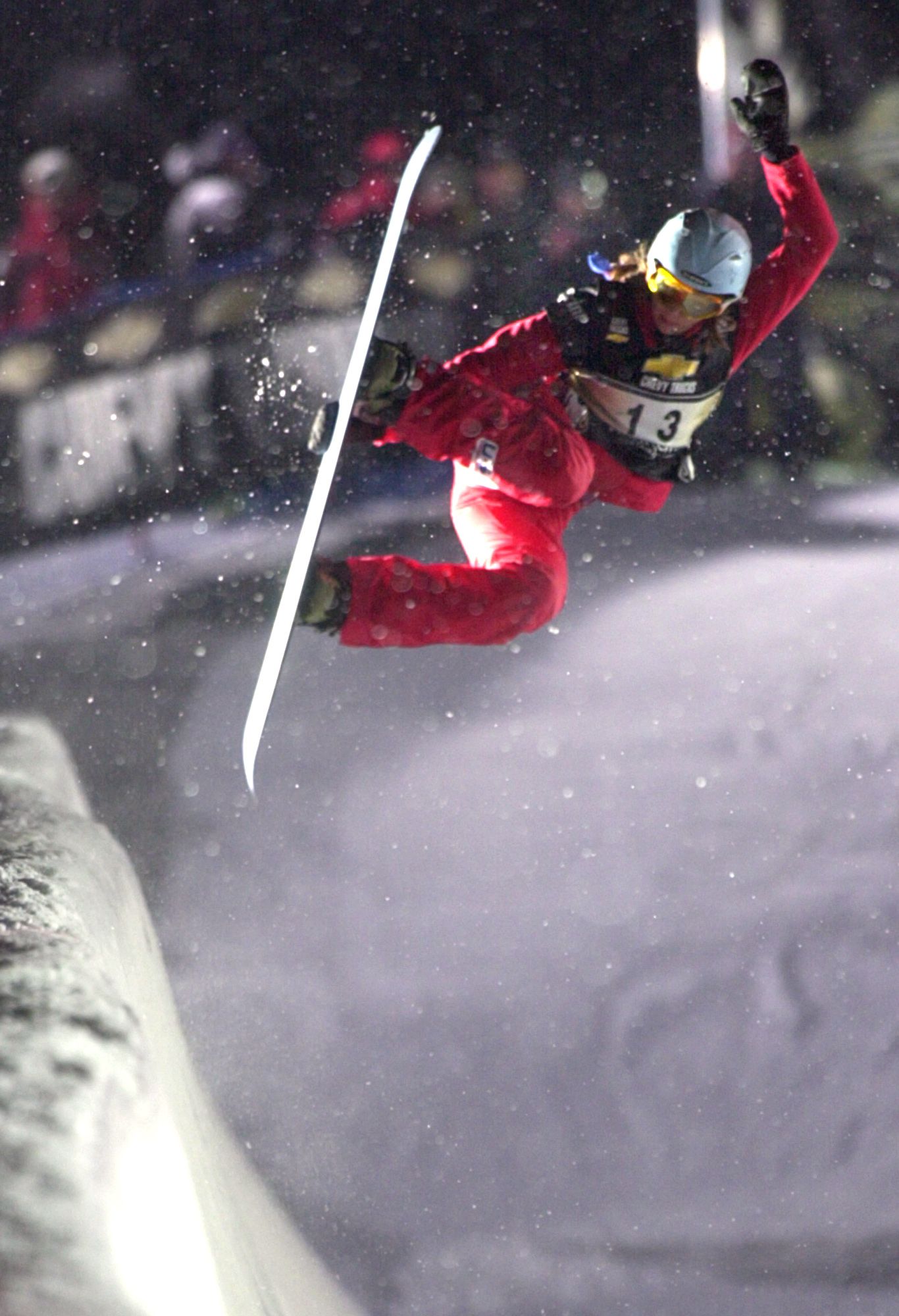
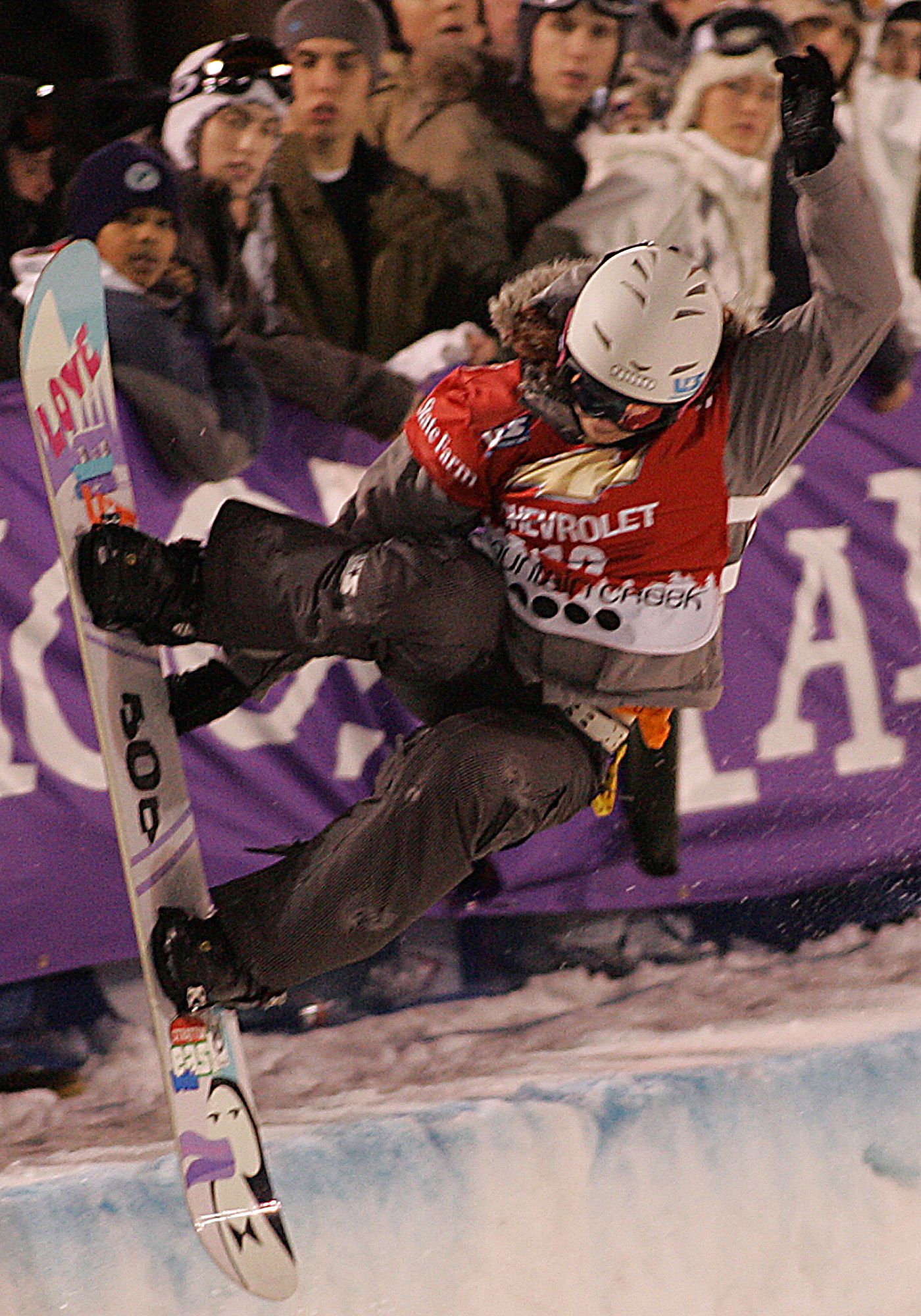
Tricia Byrnes followed her brother into snowboarding, then set the standard for women. [AP and courtesy photos]
Starting in 1985, they held a competition called the U.S. Open at Stratton, and the scene blew up. By the time Byrnes won the U.S. Open women’s halfpipe as a 17-year-old amateur in 1992, the sport had blown up. In the coming years, Byrnes became a poster child for this growing pastime, winning dozens of events, appearing on the cover of the program for the Winter Goodwill Games in 2000, and competing in the 2002 Olympics.
All that feels so long ago now. But two decades later, Byrnes – who now works at events with riders of all levels as a staffer at the United States of America Snowboard and Free-Ski Association – realizes how lucky she was. Not everyone gets to spend their life involved with something they love, and not everyone gets to watch that thing they love blossom from an alternative pastime on a modest little hill in Vermont into a multi-million dollar industry practiced around the world.
There are good things and bad things about being a pioneer – about bearing witness to that transition from pastime to big business. But as Byrnes approaches the age of 50 — and as she reflects on the loss of her brother over twenty years ago to an accidental overdose, and her ongoing recovery from breast cancer – she can’t help but marvel at how much just being on that mountain still means to her.
“It’s not so much about winning,” Byrnes says during a video call from her current home in Tulsa, Oklahoma (though she and her husband are moving back to the more snowboard-friendly confines of Colorado soon). “It’s just about finding that next level, or putting yourself out there, or failing and growing and failing again. It’s all a metaphor for life or something, even if I don’t know what. Snowboarding got me in the mountains. It got me in the community. It helped me just be more of me.”
As snowboarding began to take off in the mid-1990s, so did Tricia Byrnes’ career. In those early years, she was one of the only girls on the mountain; she’d open up snowboarding magazines and the only women she’d see would be models posing for advertisements in bikinis. But Byrnes had her brother to help indoctrinate her into the scene, and she found another female friend who was as into it as she was, as well as a mentor who helped her find her place in competitions.
In some ways, Byrnes says now, the opportunities for women opened up more quickly in snowboarding than they did in other burgeoning sports.
“It feels to me like we created more of an equal space quickly, and that wasn’t by accident,” Byrnes says. “There were a lot of female pioneers that pushed for equal prize money and recognition for things other than being pretty.”
When Byrnes was in her early 20s and placing in national and international events, the announcement came down: Snowboarding would be featured at the 1998 Winter Olympics in Nagano, Japan. It was a strange transition for Byrnes, and for the others who had come of age on Stratton Mountain – where, not that long before, snowboarders weren’t even allowed on certain trails.
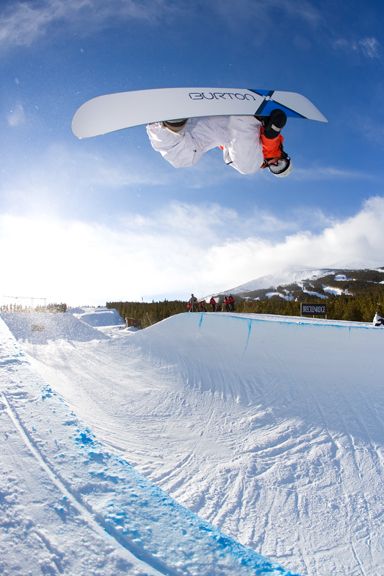
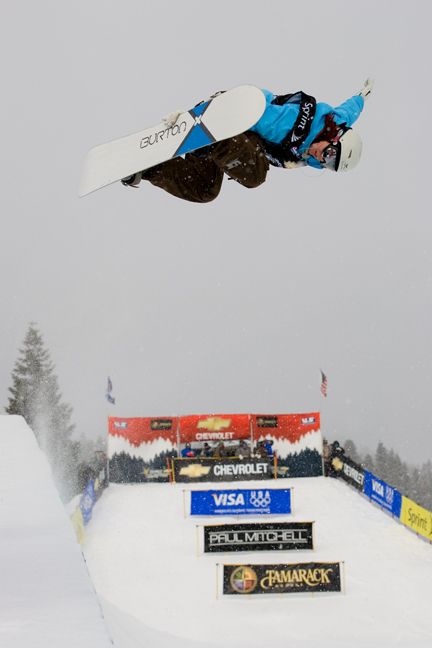
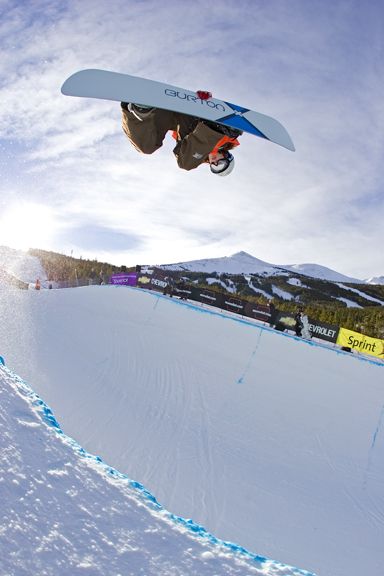
The halfpipe is where Tricia Byrnes made her name. She won more than a dozen World Cup medals and made the 2002 Olympic team. [Courtesy photos]
In those early years, the U.S. Open at Stratton was a scene, dotted with epic parties, even if Byrnes was never much of a partier herself. Adults didn’t always get it; some frowned on it. But it also meant there was an alternative sport for young people who might not have fit in elsewhere.
“It was kind of cool and punk rock,” she says. “I think people related to that – it was like, ‘I want to be different and go this alternative path and break stereotypes.’ I think when the Olympics happened in ‘98, the snowboard community was a little on the fence about it. It's sort of like we built the party, and then they're like, ‘Okay, cool. We're going to take that and capitalize on it and not honor the things that you guys value.’”

Byrnes failed to qualify for that Olympic team in 1998. And then her own personal tragedy struck the next year: Her brother died suddenly while spending the night with friends in New York City. At the time, their local newspaper, the Hartford Courant, attributed Doug’s death to an asthma attack. But Tricia says she recently learned that he died of an accidental drug overdose.
“I took a nap that day and woke up and I just had this weird feeling,” she says. “And then literally the cops called me 10 minutes later and started asking, like, ‘Did you know a Doug Byrnes?’ And I'm like, ‘Why did you say in the past tense?’ But it’s like, after all these years, he’s still there every day. And I’m so grateful. I felt so grateful that he gave me snowboarding and our community of people then and now.”
By the time Byrnes qualified for the Salt Lake City Olympics in 2002, everything had changed, especially the perception of the sport and its athletes. Maybe it was because so many of her friends who competed at Nagano in 1998 felt so tight and unhappy about the experience, and maybe it was partly due to the loss of her brother, too. Still, Byrnes went into 2002 with only one goal: I’m going to have the most fun I’ve ever had. She finished sixth in the half-pipe, with only one regret: “You don’t realize that for the rest of your life,” she says, “everyone’s gonna be like, ‘Oh, you went to the Olympics – did you win a medal?’”
Byrnes retired from competition a few years later and spent the ensuing years doing whatever she could to stay connected to snowboarding. She helped to manage athletes, worked in social media and broadcasting, and now serves as the marketing manager for the USASA, which facilitates events for athletes of all ages and skill levels. At the same time, Byrnes has written poignantly on her personal blog about her own treatment for breast cancer, and her slow journey back to the mountain as her treatments wind down.
“I went out (on the mountain) recently, and realized, ‘Oh, I’m not back yet,”’ she says. “Normally, I’d be like, ‘Just go till you puke.’ But now I was like, ‘I might puke.’ And it was interesting, just having that moment of personal grace where I was like, ‘I need to stop.’”
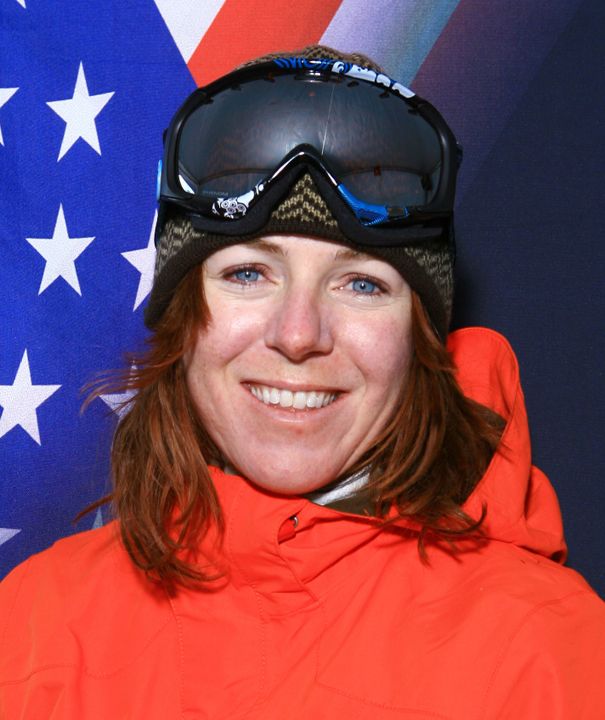
Yet she has no plans of stopping in the long term. She’s seen the way the athletes in her sport have changed as they’ve become international superstars. She’s seen how that alternative culture, while still ingrained in the roots of her sport, has given way to meticulous training programs for its elite athletes. She’s seen the money and prestige come flowing in, and she’s seen the good and bad things that come with that money and prestige. And even as the sport has changed, she’s never fallen out of love with it.
“It's been cool to see that whole sort of gamut from being, like, not even allowed on the mountain, to walking into the Olympic opening ceremonies, and then to working with parents who are like, ‘What's it going to take to get to the Olympics?’” she says. “It's been so cool to witness all of it.”
Byrnes pauses for a moment. She smiles.
“And I just want to stay in it,” she says, “until something cooler comes along.”